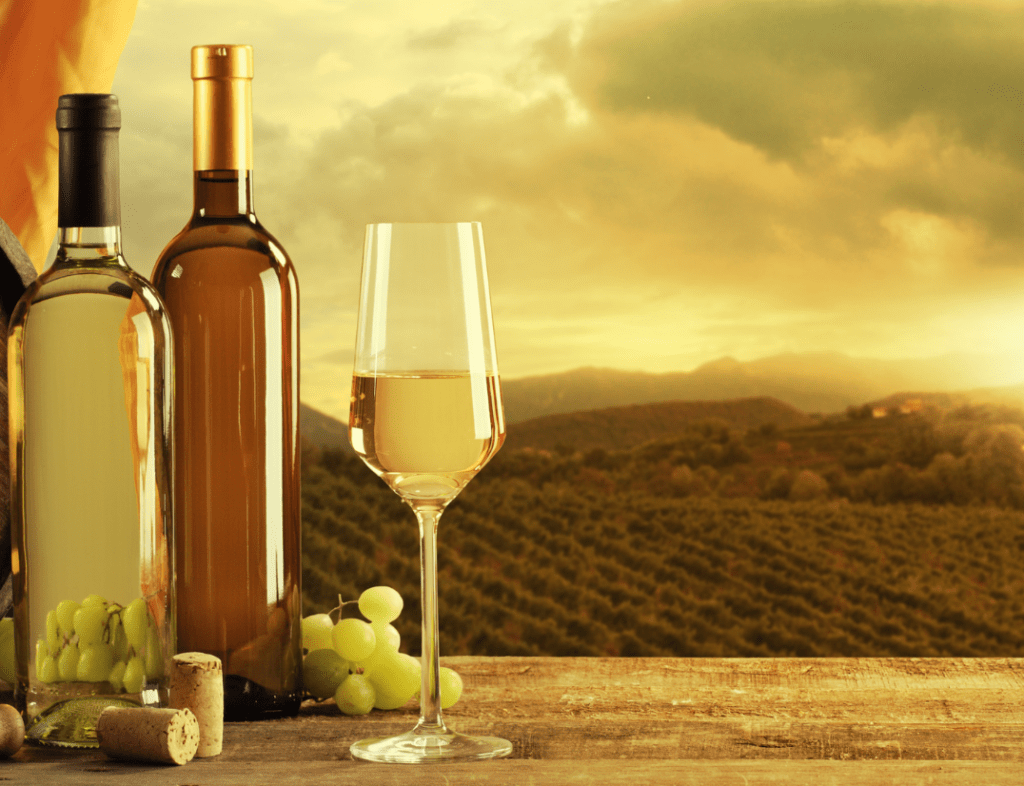A shout-out to a highly versatile varietal
If you know me well, you know Chardonnay is one of my favorite wines. I love it for its variety. This grape can be made into different styles of delicious white wine. Its characteristics are effected by where it is grown and the method the winemaker uses in production. While this can be said for many grapes, somehow I find Chardonnay to be more interesting than most.
If you think you don’t like Chardonnay, it’s probably just that you haven’t found your style yet.
These wines can range from pale yellow to deep gold in hue. When you see a pale yellow or straw yellow Chardonnay, it was likely made in stainless steel tanks. The lack of golden hues means it was made without the oxidation effect that occurs when wine is aged in barrels. Oak barrel aging adds both color and body while also imparting flavors.
It is also likely these pale wines are crisp and fresh on the palate. A heavier bodied creamy Chardonnay is made with malolactic fermentation, which is a process usually reserved for wines that will be aged in oak. So those made without oak will be higher in acid, which is what makes your mouth water and leaves you wanting more.
This light, bright style of Chardonnay is usually at a lower price point than those aged for some time in oak. It’s really a matter of the cost of producing the wine being less, so it is sold for less.
Probably the most famous crisp Chardonnays come from Chablis, in the northernmost corner of Burgundy, France. These wines have notes of green apple and lemon, with minerality and salinity. Much of the US west coast will carry these same characteristics. In other parts of the world, the lighter version of Chardonnay could be more dominate with citrus fruits and some tropical notes.
When Chardonnay shows a bit more color, a medium and bright yellow, these wines are seeking a balance between the brightness of stainless production and the complexity and full mouth feel of oak aging. This balance can be achieved by using oak barrels for only a very short time of 2 to 6 months. Or, the oak barrels could be completely neutral, with no flavors being transferred from the oak to the wine. Another option is to use larger oak barrels, so there is less oak influence based on the wood to juice ratio. And finally, there could be a blend of a portion of the wine having been made in stainless and a portion made in oak. With this balancing act, it is possible some, or all of the wine undergoes malolactic fermentation, to add in the rich, creamy notes.
I love this style of Chardonnay for the bright fruit notes of green apple and citrus that dance with a richer pear and floral notes, and just a hint of vanilla and nutmeg. The complexity of all these elements playing together makes these wines fun for food pairings.
This style of wine is found in most Grand Cru Chablis, and from the Cote d’Or region of Burgundy. You’ll also find these wines coming from Oregon, New Zealand and other cool regions where it can be hard to get to peak ripeness in the grapes.
When Chardonnay grapes are more ripe, and usually grown in warm climates, we tend to see winemakers finding balance in their use of oak. These wines, made with more toasted oak, or a mix of new and neutral barrels, are a pretty golden color. You will find these wines from Napa, Sonoma, and the Central Coast of California. Chile, Australia and New Zealand may lean towards this production style as well. These warmer climates reveal more tropical notes, including pineapple, alongside green apple and pear. Notes of coconut, hazelnut or vanilla come from the oak. These wines will have a full mouth feel from the malolactic fermentation.
The deepest gold Chardonnays will even show a slight hint of an orange hue in the glass. These are the wines referred to as ‘oaky and buttery.’ And truly, these are the wines we either love or hate. This style, made with long aging in heavy toasted oak, is one you either love or hate. And because this is usually the style consumers think of when they are offered a Chardonnay.
The style is dominant in California, probably because, back in the 70s when wine production really got underway, they didn’t have Old-World experience to guide them. So, their white wine was made basically the same as their red wines. Meaning they underwent full malolactic fermentation and were aged in oak for long periods.
Many producers have started using a lighter touch to soften these wines. The well known buttery characteristic comes from the full malolactic fermentation, and when the wine is perceived as oaky, this can be an indication of American oak.
If you think you don’t like Chardonnay, look for a different style. Lovers of Sauvignon Blanc may also love a Chardonnay produced in stainless. But if you think Sauvignon Blanc is a little too tart, then try a Chardonnay that is blended part from stainless and part oak.
Don’t give up, there’s a Chardonnay for everyone!
Try one of these craft Chardonnays this spring:
___________
Alta Marfa Winery’s 2021 Little Snack
Tasting Notes: 50% Pinot Noir / 50% Chardonnay | Forbidden Desert Vineyard A tangerine dream. Half Pinot Noir, half Chardonnay this rosé is just right for summer sippin. 120 cases produced Label Art by Maklvane
Pairing Suggestions: Ice cubes and a view.
Alta Marfa Winery’s 2021 Big Lunch
Tasting Notes: 50% Chenin Blanc – 50% Chardonnay | 6 months skin contact Forbidden Desert Vineyard Pears, stone fruit, peach pie. This is wine is a texture explosion. 79 cases produced Label Art by Maklvane
Pairing Suggestions: Fried rice, sushi, spring rolls, taco bell.
Coordinates Vineyards 2021 Chardonnay
Tasting Notes: Our 2021 Chardonnay is unoaked favoring notes of grapefruit, apple, peach and lemon. Its creamy texture and tropical fruit finish express the warm climate and stunning terroir of South Africa.
Also available as part of a 3-bottle bundle.
Pairing Suggestions: Our 2021 Chardonnay pairs well with fish, poultry or salads.
Hilmy Cellars 2021 Chardonnay
Description: This lovely 2021 Chardonnay is produced with fruit from Canted County Vineyards in the Texas Hill Country
Llano Estacado Winery’s 2019 Chardonnay from Dell Valley Vineyard
Tasting Notes: This wine is a straw-yellow color. Notes of golden apple, brioche, papaya, mango, and butter. The body is full and high in alcohol. This wine is rich but has a good amount of acidity with flavors of apple, pear, pineapple, lemon zest, and butterscotch.
Pairing Suggestions: Richly textured seafood dishes such as salmon, halibut, sea bass, crab legs, or lobster. As well as herbed chicken dishes, enchiladas, and rich soups.
Each of these are available for a limited time on Summly’s social marketplace for wine. Chardon-yay!

